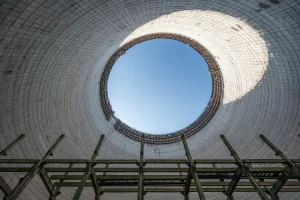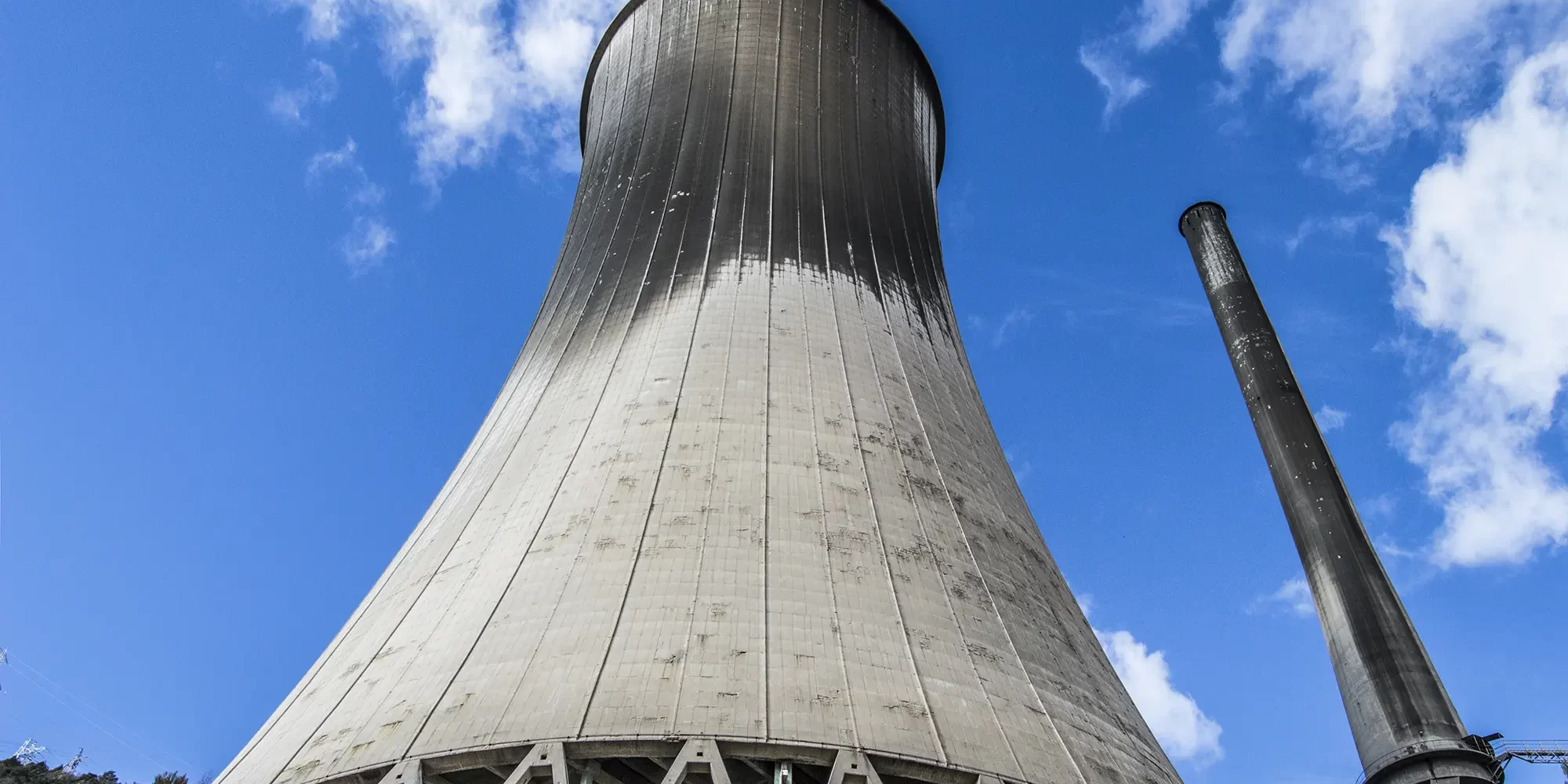Cooling towers are essential components in many industrial and commercial operations, providing an effective means of dissipating heat.
However, maintaining their efficiency and longevity can be challenging due to the constant battle against biofilm, scaling, and corrosion.
Chlorine Dioxide (ClO2) has emerged as a powerful solution for addressing these issues, helping to maximise cooling tower efficiency and reduce maintenance costs. This article explores the benefits of using Chlorine Dioxide in cooling tower treatment and how it enhances overall system performance.
Understanding the Challenges in Cooling Towers
 Cooling towers are prone to several issues that can significantly impact their performance:
Cooling towers are prone to several issues that can significantly impact their performance:
- Biofilm Formation: Microbial growth on surfaces within the cooling system can lead to biofilm formation, which reduces heat transfer efficiency and can harbour harmful bacteria such as Legionella.
- Scaling: The precipitation of minerals, such as calcium carbonate, forms scale on heat exchange surfaces, impairing heat transfer and reducing system efficiency.
- Corrosion: The presence of oxygen and other corrosive elements in the cooling water can lead to the deterioration of metal components, resulting in leaks and structural damage.
How Chlorine Dioxide Works
Chlorine Dioxide is a potent oxidising agent that works effectively to control microbial growth, scale, and corrosion in cooling towers. Its unique properties include:
- Broad-Spectrum Efficacy: ClO2 effectively eliminates bacteria, viruses, and fungi, including those that form biofilms and contribute to Legionella outbreaks.
- Stable Performance: Unlike chlorine, ClO2 remains effective over a wide pH range and does not produce harmful by-products such as trihalomethanes (THMs).
- Non-Corrosive Nature: At the concentrations used for water treatment, ClO2 is less corrosive to equipment compared to traditional chlorine treatments.
Applications of Chlorine Dioxide in Cooling Towers
- Biofilm Control: Regular dosing of ClO2 helps to prevent and remove biofilm formation on heat exchange surfaces and within the entire cooling system. By disrupting biofilm, ClO2 improves heat transfer efficiency and reduces the risk of Legionella contamination.
- Scaling Prevention: ClO2 aids in controlling the precipitation of scale-forming minerals. This not only enhances heat transfer efficiency but also prolongs the lifespan of the cooling equipment by reducing the frequency of descaling operations.
- Corrosion Mitigation: By controlling microbial growth and maintaining water chemistry, ClO2 helps to reduce the corrosive effects on metal components. This leads to fewer leaks and structural issues, lowering maintenance costs and extending the life of the cooling tower.
Benefits of Using Chlorine Dioxide in Cooling Towers
- Improved Efficiency: By effectively managing biofilm, scale, and corrosion, ClO2 enhances the overall efficiency of cooling towers, leading to better heat dissipation and energy savings.
- Cost Savings: The use of ClO2 reduces the need for frequent maintenance and repair, resulting in significant cost savings over time.
- Compliance and Safety: ClO2 treatment helps cooling towers meet health and safety regulations by reducing the risk of Legionella and other microbial hazards.
Chlorine Dioxide is a game-changer for cooling tower maintenance, offering a comprehensive solution to the challenges of biofilm, scaling, and corrosion. Its broad-spectrum efficacy, stability, and non-corrosive nature make it an ideal choice for improving the efficiency and longevity of cooling towers. Scotmas provides advanced ClO2 solutions tailored to the specific needs of your cooling system, helping you achieve optimal performance and compliance.
For more information on how Chlorine Dioxide can enhance the efficiency of your cooling towers, contact Scotmas today. Our experts are ready to assist you in implementing effective water treatment strategies that ensure the longevity and efficiency of your cooling systems.






